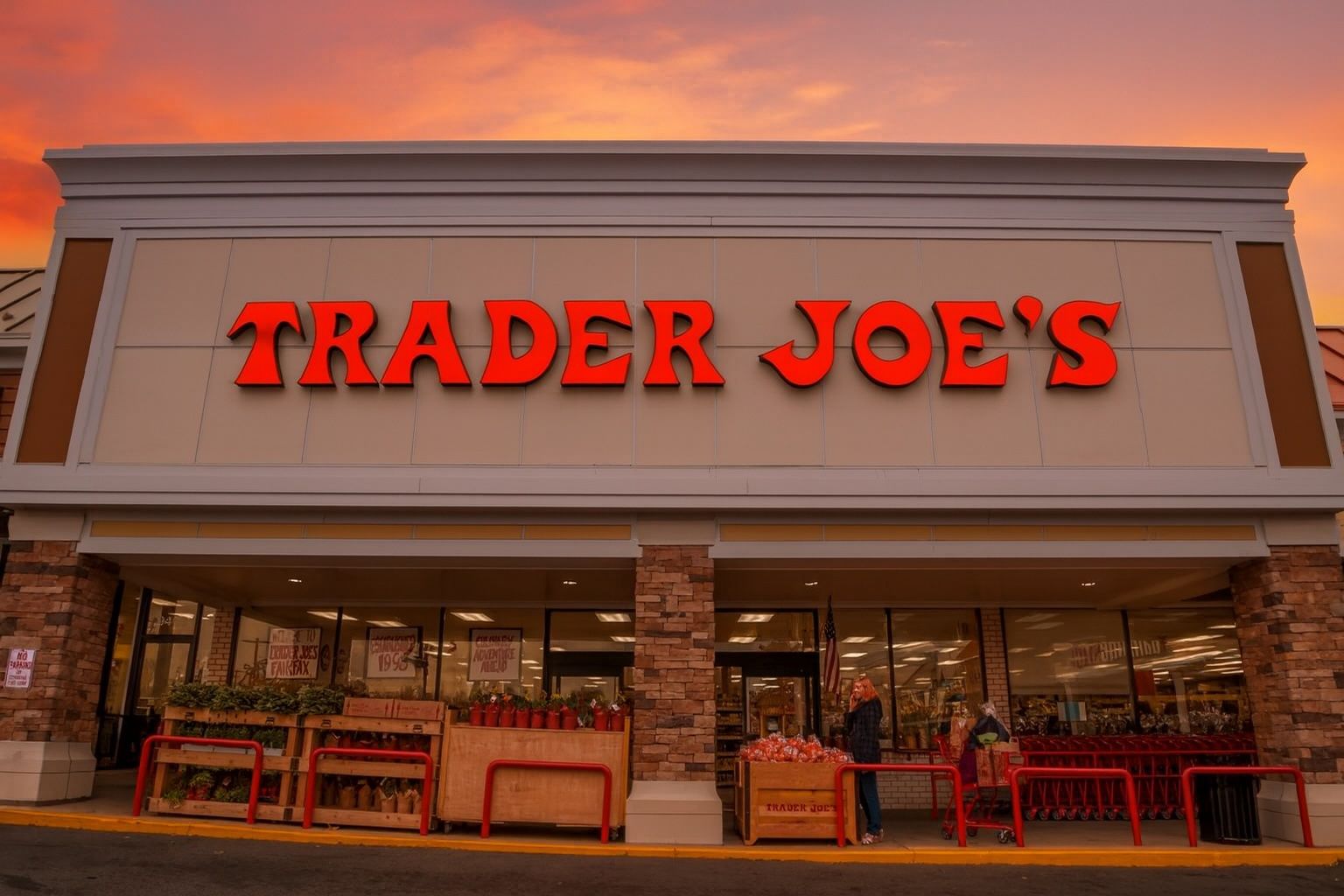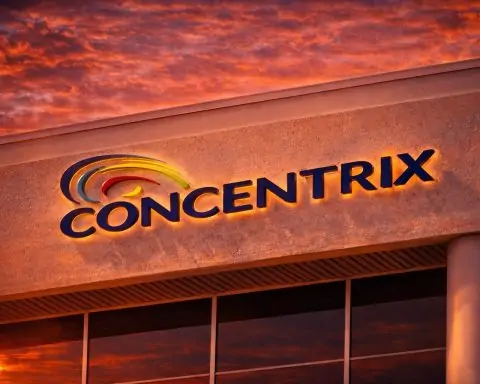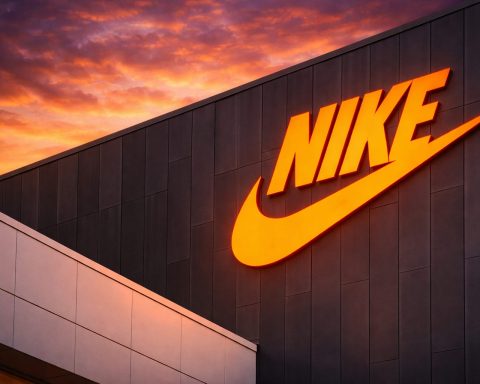- Four New Stores This Week: Beloved grocer Trader Joe’s is opening four new locations across Georgia, New Jersey, Missouri, and Utah in the final week of October [1] [2]. These include Peachtree City, GA (opening Oct. 27), Iselin/Woodbridge, NJ (Oct. 29), Columbia, MO (Oct. 30), and Holladay, UT (Oct. 31).
- Coast-to-Coast Expansion: The chain has 30+ new stores in the pipeline for 2025, spanning at least 18 states [3] [4]. After these openings, Trader Joe’s will surpass 600 stores nationwide [5], continuing a rapid growth trend (34 new stores opened in 2024 alone [6]).
- Staying Private – No Stock Ticker: Trader Joe’s is privately owned (by the family behind German grocer Aldi Nord) and does not trade publicly [7] [8]. Investors can’t buy “Trader Joe’s stock,” but analysts suggest looking at rival grocery stocks like Walmart (WMT), Costco (COST) or Kroger (KR) as proxies [9]. Those companies are seen as benefiting from similar strong grocery demand.
- Grocery Sector Outlook:Food prices are expected to rise more slowly in 2025 (about +0.8% for groceries) after the inflation of recent years [10]. Shoppers are still seeking value, which favors chains like Trader Joe’s known for affordable staples (a 2022 survey found Trader Joe’s had the lowest prices among Southern California grocers [11]). Analysts note the grocery sector remains resilient: Trader Joe’s has actually gained market share since 2020 at a faster clip than Whole Foods, Kroger and others [12], thanks to its loyal following and unique offerings.
- Expansion Strategy: Trader Joe’s typically opens new stores in existing markets where it already has a presence [13], often quietly adding multiple locations at once rather than splashy one-off launches. Company insiders say decisions are driven by factors like local population density and site availability – “community campaigns” begging for a store aren’t what determine new locations [14]. “We are growing at a pretty good rate right now, adding more and more stores,” Trader Joe’s marketing exec Tara Miller noted, underscoring the chain’s confident expansion plans [15].
New Stores Sprout Up in Four States
Trader Joe’s fans have four big reasons to celebrate this week. The quirky grocery chain – known for its cult-favorite snacks and friendly tiki-themed stores – is cutting ribbons on four new locations by Halloween. According to official company announcements, Trader Joe’s is opening new stores in Peachtree City, Georgia; Iselin (Woodbridge), New Jersey; Columbia, Missouri; and Holladay, Utah over the last days of October [16] [17]. Each grand opening is slated for 9:00 a.m. local time, with crowds of eager shoppers expected to line up early for the debut of their new neighborhood “TJ’s.”
These late-October store openings cap off a surge of expansion for Trader Joe’s in 2025. Notably, the Georgia store in Peachtree City (south of Atlanta) opens Monday, Oct. 27, followed by the New Jersey store on Wednesday, Oct. 29. Columbia, MO (a college town hungry for its first Trader Joe’s) will see its store open Thursday, Oct. 30, and Utah gets yet another Trader Joe’s in the Holladay area (near Salt Lake City) on Friday, Oct. 31 [18] [19]. This Utah opening is the second in the state this month – Trader Joe’s just opened a store in Riverdale, UT on Oct. 24 as well, its sixth in Utah [20]. All four of the latest locations are in states where Trader Joe’s already operates, extending the chain’s reach in those regions rather than entering new states [21].
Local excitement has been brewing for these stores. In the Atlanta suburbs, Trader Joe’s entry into Peachtree City fills a void south of the city. In New Jersey, the new store in Iselin (Middlesex County) adds to TJ’s footprint in a densely populated market. Columbia, Missouri residents have long clamored for a Trader Joe’s of their own – now the college town will finally get one, saving locals a two-hour drive to the nearest location. And in Utah, the Salt Lake Tribune notes that with Holladay opening, the state will have seven Trader Joe’s stores (with an eighth planned) as the chain steadily builds out in the Salt Lake Valley [22].
Trader Joe’s typically does little advertising for new stores, preferring to simply post “Coming Soon” on its website and let word-of-mouth spread. For example, in Texas, where Trader Joe’s just expanded in the Austin area, devoted fans even created a Facebook group to swap intel on the long-awaited Bee Cave store [23]. That Bee Cave, TX location (the chain’s fourth in Greater Austin) was recently confirmed as “coming soon” – locals speculated it would open by late October, spotting final touches like Halloween-themed tote bags inside [24] [25]. While an official date wasn’t announced in time for Halloween, the store’s debut is clearly imminent. Including the Bee Cave store, Texas now counts 26 Trader Joe’s locations statewide, up from just 18 locations five years ago [26]. And more are on the horizon: another new Texas store in Cedar Park (northwest of Austin) is already in the works for 2026–27 [27], showing the chain’s long-term commitment to growth.
Rapid Expansion Defies Retail Gloom
Trader Joe’s aggressive growth comes at a time when many retailers are retrenching or closing stores – but the grocery sector, especially value-focused chains, are a bright spot. “The popular grocery store chain continues to expand, defying the challenges faced by so many other retailers in 2025,” Fast Company observed [28]. Indeed, Trader Joe’s appears to be speeding up its expansion pace. The company opened 34 new stores in 2024 [29], according to a Progressive Grocer report, and is on track to meet or beat that number in 2025. As of early September, Trader Joe’s had 30 upcoming stores listed as “coming soon” on its website [30] – and that list has only grown since. Once the latest batch opens, Trader Joe’s will surpass 600 stores nationwide [31], a milestone in its nearly 58-year history. (For context, Trader Joe’s operated 581 stores as of April 2025 [32], and just a decade ago it had around 400.)
Unlike some competitors that rapidly enter new states, Trader Joe’s has focused on densifying its presence in markets where it already has a fan base. “All of the new stores will be in states where Trader Joe’s has already set up shop,” Grocery Dive noted of the chain’s 2025 expansion plans [33]. For example, adding a second location in South Carolina (Columbia) helps fill a gap in a state where Trader Joe’s had only a sparse presence (just 4 stores before) [34]. In Utah, the two new Salt Lake-area stores deepen coverage in a region with high demand. This strategy of “tucking in” new stores in proven markets has paid off: it avoids overextension and capitalizes on existing distribution networks and brand loyalty.
Industry analysts point out that grocery is one of retail’s most resilient sectors, and Trader Joe’s performance reflects that strength. From mid-2020 to mid-2025 – a period spanning pandemic disruptions and inflation – Trader Joe’s actually increased its market share (albeit by under 1%), outpacing the share gains of Whole Foods, Kroger, Albertsons and other large grocers in that timeframe [35]. That’s impressive given Trader Joe’s smaller size and the fierce competition. It suggests the chain picked up new customers during the pandemic (when its efficient smaller stores and unique products stood out) and managed to keep them. A March 2025 study by retail analytics firm Placer.ai further found Trader Joe’s increasing its hold on customers, with fewer shoppers “cross-shopping” at other grocers on the same trip, indicating strong loyalty [36]. In plain terms, if you go to Trader Joe’s, you’re less likely to also stop at a competitor, compared to previous years – a good sign for TJ’s wallet share.
Meanwhile, other grocery chains are expanding too, highlighting a broader trend. Discount titan Aldi (Trader Joe’s estranged German cousin) remains the fastest-growing U.S. grocer – it opened 105 new stores in 2024 [37] and is planning to double its expansion rate with 225 new stores in 2025 (bolstered by its acquisition of Winn-Dixie stores) [38]. Regional grocers like Publix and H-E-B are also adding dozens of locations [39]. And specialty organic chain Sprouts Farmers Market opened 35 stores last year [40]. In that context, Trader Joe’s addition of 30-40 stores annually is robust, though not the largest in absolute number. What’s notable is Trader Joe’s consistency – the company has steadily grown its fleet every year without closing stores. Its model of smaller-format stores (~10-15k square feet, much smaller than a typical supermarket) makes expansion easier in dense urban areas and suburbs alike. However, one constraint on future growth could be finding real estate: retail analysts from JLL note that vacancy in grocery-anchored shopping centers is at record lows post-pandemic (around 3.5% nationally) [41] [42]. Grocers are vying for limited prime sites, which has driven rents up for supermarket-anchored spaces [43]. Trader Joe’s, known for being picky in site selection (ample parking is a must, for example [44]), may have to get creative to continue its cadence of new openings if prime locations are scarce. So far, however, the chain is finding ways to grow – even if that means planning projects years ahead (as with the Cedar Park, TX store scheduled for 2027 [45]).
No Trader Joe’s Stock? Here’s What Investors Are Watching
Shoppers may be thrilled by Trader Joe’s growth, but what about investors? Since Trader Joe’s is privately held (under Aldi’s Albrecht family ownership) [46], there is no direct stock to buy or sell. That hasn’t stopped speculation about the company’s financial success – especially as it expands. However, because Trader Joe’s doesn’t publicly report earnings or sales, outsiders have limited data. (Analysts estimate the chain pulls in over $16 billion in annual revenue, according to Supermarket News – but that’s just an educated guess.) The lack of public stock also means Trader Joe’s avoids the quarter-by-quarter pressures of Wall Street, potentially allowing it to focus on steady growth and customer experience over short-term profits.
For investors who want to ride the wave of grocery sector growth, experts point to a few blue-chip alternatives. “The average investor can’t take a stake in Trader Joe’s as it’s a private company. Instead, investors might consider taking stakes in its rivals… worth considering are Walmart, Costco, and Kroger,”* noted Nasdaq’s TipRanks analysis [47]. All three of those big chains are publicly traded and have significant grocery businesses that benefit from similar consumer trends. Walmart (WMT) – the country’s largest grocer by sales – has been a stalwart stock with a “Strong Buy” consensus from many analysts [48]. The company’s grocery arm has helped drive solid growth as shoppers hunt for low prices; Walmart recently expanded its food offerings (for instance, rolling out more plant-based products in thousands of stores) [49]. Costco (COST), while primarily a warehouse club, thrives on food sales too and continues to open new clubs; analysts like its growth prospects and resilience (Costco stock has offered double-digit upside potential in forecasts) [50]. Kroger (KR), the largest traditional supermarket chain, is a more moderate pick – it’s in the midst of a proposed merger with Albertsons and has a stable dividend, making it potentially appealing for value investors [51]. In short, grocery stocks have been relative safe havens in a volatile retail landscape, because people need to buy food in good times and bad.
Looking ahead, the outlook for grocery retail remains cautiously optimistic. Inflation that plagued supermarkets in 2022–2023 is finally easing: the USDA expects food-at-home prices to rise only 0.8% in 2025, after surging much more in previous years [52]. Slower price increases could actually boost volumes (customers might buy a little more if prices stabilize) and should relieve some margin pressure on grocers. During the high-inflation period, Trader Joe’s notably kept many prices low – even if it meant temporarily shelving some costlier items – to maintain its value image. That loyalty to affordable pricing hasn’t gone unnoticed. As mentioned, a Los Angeles Times price survey found Trader Joe’s beat out major competitors for the cheapest basket of staple groceries in SoCal [53]. With budget-conscious consumers still watching every dollar, Trader Joe’s value proposition is a key strength. “Grocery stores across the country compete to win over budget-conscious consumers,” the LA Times wrote, noting that Trader Joe’s expansion comes as shoppers are seeking bargains amid high living costs [54].
At the same time, consumer demand for unique products and a pleasant in-store experience remains high – areas where Trader Joe’s shines relative to bigger-box grocers. The chain’s ability to generate “fanatical” enthusiasm (think social media fan pages and viral product reviews) gives it essentially free marketing in new markets. This strong brand equity likely contributes to its store productivity – although Trader Joe’s doesn’t publish sales figures, industry insiders often speculate that its sales per square foot are among the highest in retail grocery. All of these factors make Trader Joe’s a fascinating case: a quietly expanding, fiercely beloved retailer thriving in an industry dominated by giants.
Expert Take: “We’re Growing at a Good Rate”
Despite the whirlwind of new store activity, Trader Joe’s itself tends to stay tight-lipped in the press. However, in a recent episode of the company’s own “Inside Trader Joe’s” podcast, marketing executives Tara Miller and Matt Sloan shed some light on how they approach expansion. Miller acknowledged hearing all the pleas from fans on social media begging for a Trader Joe’s in their town – and while the enthusiasm is appreciated, she said strategic factors ultimately drive where and when new stores open. “We are excited when people are excited about us, but that’s really not what’s driving the decisions,” Miller explained, emphasizing that internal analysis of population density, accessibility and parking dictates site selection more than online petitions do [55] [56]. The company scouts locations that can support a high volume of shoppers and maintain the Trader Joe’s atmosphere (e.g. ample parking for that steady flow of customers).
Crucially, Miller added that “we are growing at a pretty good rate right now, adding more and more stores” [57] – a statement backed up by the flurry of openings we’re seeing. In fact, a Trader Joe’s spokesperson told the L.A. Times that the current pace of openings is faster than it’s been in years [58]. The retailer appears to have shifted into a higher gear coming out of the pandemic, seizing opportunities to expand while other chains have paused. Continuing its rapid expansion plans, Trader Joe’s seems to unveil an exciting lineup of new store locations each month, wrote retail journalist Peggy Packer [59]. That was back in July, and the pattern has only accelerated into the fall.
Experts say Trader Joe’s methodical growth strategy – steady, under-the-radar, and customer-centric – is a big reason for its success. “Trader Joe’s rarely announces the opening of a single store… once again, the chain is adding multiple new stores to its footprint,” one industry report noted in April [60]. By rolling out groups of stores and keeping the focus on its unique products (rather than flashy grand openings), Trader Joe’s maintains an aura of scarcity and specialness that other grocers envy. Each new store tends to quickly develop a loyal local following, as evidenced by the social media buzz in places like Bee Cave and Columbia before the doors even open.
Bottom Line: Trader Joe’s is on an expansion tear. From the Southeast to the Mountain West, new Trader Joe’s locations are popping up to the delight of shoppers who’ve long awaited them. This privately-owned grocer is bucking broader retail trends, investing in brick-and-mortar growth at a time when many retailers are shrinking. Its formula of affordable prices, distinctive offerings, and clever marketing has fostered near-fanatical customer loyalty – and that loyalty is fueling its coast-to-coast growth. While you can’t buy stock in Trader Joe’s, its momentum reflects well on the grocery sector overall, where consumer demand remains strong. As Trader Joe’s crosses the 600-store threshold and keeps growing “at a pretty good rate” [61], one thing is clear: the Fearless Flyer isn’t flying away any time soon. Whether or not your city is next on Trader Joe’s expanding map, the retailer’s success story is one to watch in the coming years.
Sources: Trader Joe’s announcements [62] [63]; USA Today/Clarion Ledger (S. Shafiq) via MuckRack [64]; MySA (San Antonio Express-News) [65] [66]; Fast Company [67] [68]; Grocery Dive [69] [70]; Salt Lake Tribune [71]; Los Angeles Times [72] [73]; Nasdaq/TipRanks [74]; JLL Research [75] [76].
References
1. www.traderjoes.com, 2. www.traderjoes.com, 3. www.fastcompany.com, 4. www.grocerydive.com, 5. www.fastcompany.com, 6. www.jll.com, 7. www.nasdaq.com, 8. www.latimes.com, 9. www.nasdaq.com, 10. www.latimes.com, 11. www.latimes.com, 12. www.grocerydive.com, 13. www.grocerydive.com, 14. www.latimes.com, 15. www.latimes.com, 16. www.traderjoes.com, 17. www.traderjoes.com, 18. www.traderjoes.com, 19. www.traderjoes.com, 20. www.sltrib.com, 21. www.grocerydive.com, 22. www.sltrib.com, 23. www.mysanantonio.com, 24. www.mysanantonio.com, 25. www.mysanantonio.com, 26. www.mysanantonio.com, 27. www.mysanantonio.com, 28. www.fastcompany.com, 29. www.jll.com, 30. www.grocerydive.com, 31. www.fastcompany.com, 32. www.fastcompany.com, 33. www.grocerydive.com, 34. www.grocerydive.com, 35. www.grocerydive.com, 36. www.grocerydive.com, 37. www.jll.com, 38. www.jll.com, 39. www.jll.com, 40. www.jll.com, 41. www.jll.com, 42. www.jll.com, 43. www.jll.com, 44. www.latimes.com, 45. www.mysanantonio.com, 46. www.latimes.com, 47. www.nasdaq.com, 48. www.nasdaq.com, 49. ts2.tech, 50. www.nasdaq.com, 51. www.nasdaq.com, 52. www.latimes.com, 53. www.latimes.com, 54. www.latimes.com, 55. www.latimes.com, 56. www.latimes.com, 57. www.latimes.com, 58. www.latimes.com, 59. www.delimarketnews.com, 60. prowly.com, 61. www.latimes.com, 62. www.traderjoes.com, 63. www.traderjoes.com, 64. x.com, 65. www.mysanantonio.com, 66. www.mysanantonio.com, 67. www.fastcompany.com, 68. www.fastcompany.com, 69. www.grocerydive.com, 70. www.grocerydive.com, 71. www.sltrib.com, 72. www.latimes.com, 73. www.latimes.com, 74. www.nasdaq.com, 75. www.jll.com, 76. www.jll.com







